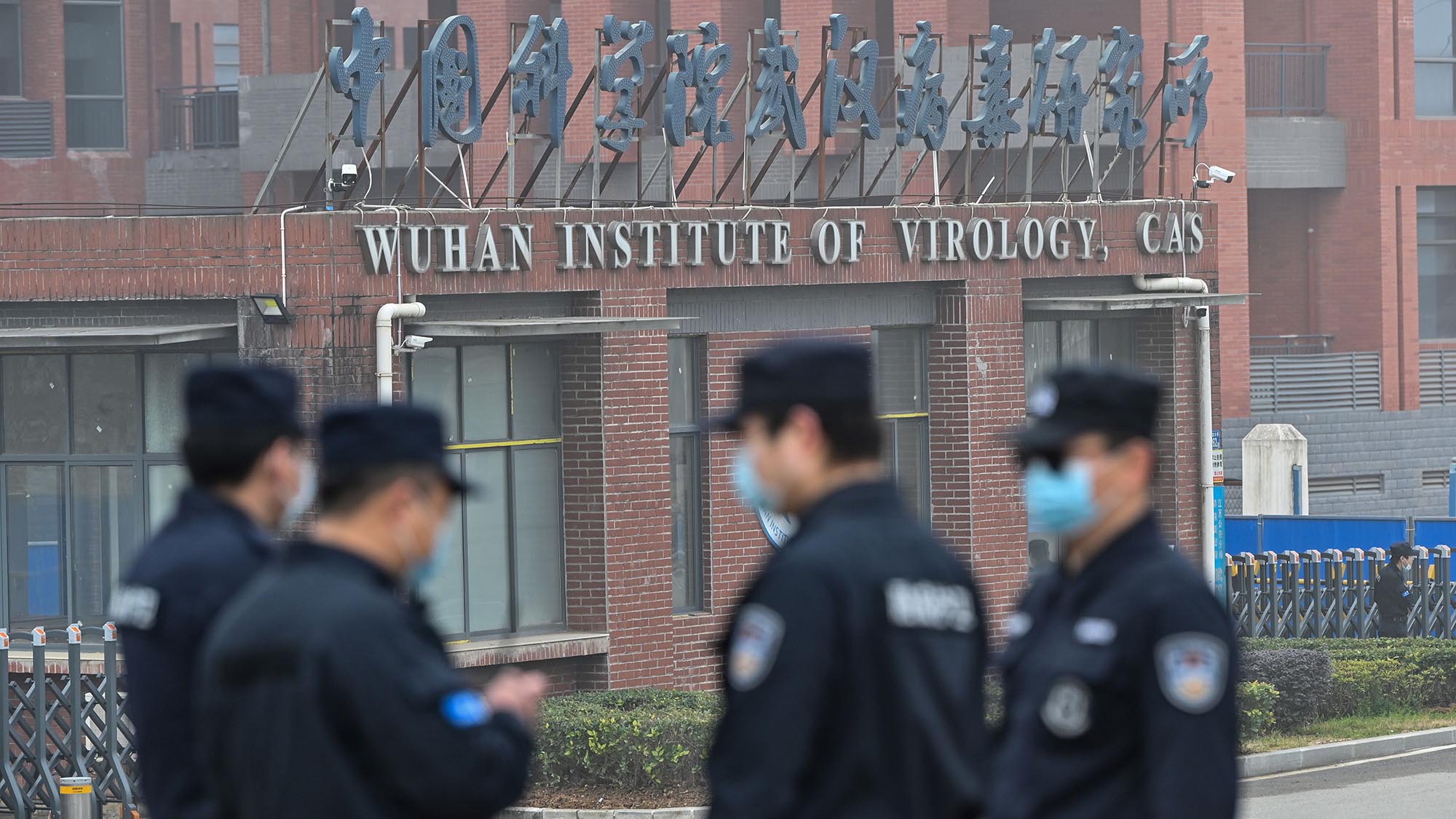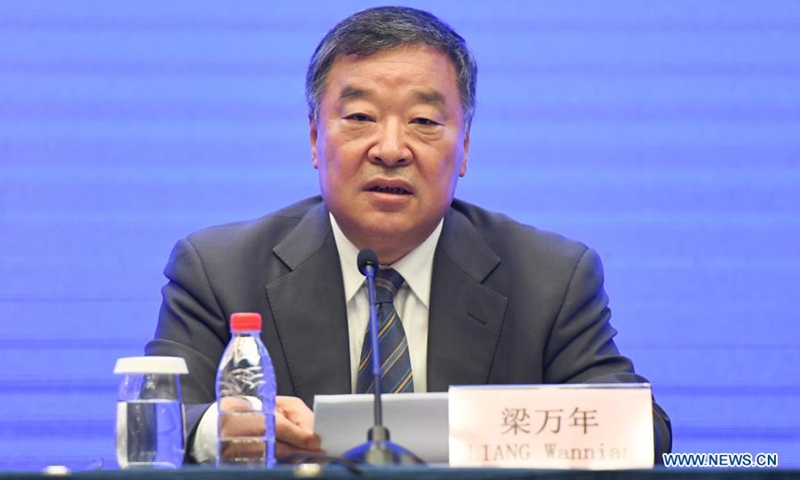Translation Google
SOCIETY
Posted today at 10:21
ANALYSIS
Origins of Covid-19: the trail of a leak from the Wuhan laboratory relaunched, China at bay
Pierre-Antoine Donnet
A serious lead is emerging on the origin of Covid-19. The coronavirus could well come from bats that infected workers in a mine in Yunnan in southwest China in 2012. Samples of the virus were reportedly taken by the Wuhan Institute of Virology, relaunching the hypothesis of the accidental leak at the origin of the pandemic. At the same time, calls are becoming increasingly urgent across the world to China, called on from all sides to finally shed light on a pandemic that has killed more than 2.6 million people until present.
Remember, a little over a year ago, these images of sick pangolins, wild animals sold on the stalls of the Wuhan wet market, a few stray bats. A scenario that has long masked the true origin of the virus. To launch the counter-attack, Beijing propaganda had come to accuse the US military of being responsible for the contamination in Wuhan during the World Military Games held in the city in October 2019. At the beginning of last September, Chinese official media had even posted on social networks a video evoking "200 mysterious biosafety laboratories set up by the American army all around the world",likely to have released the new coronavirus. Then she had moved on to an equally improbable thesis of frozen products imported from abroad.
The reality is, of course, to be sought elsewhere. One lead is becoming more and more credible, but one that the Chinese authorities are seeking by all means to hush up: that of the contamination of workers in 2012 in a mine in Yunnan which would then have circulated quietly until a A prominent Chinese researcher does not bring the virus back to the P4 laboratory of the Wuhan Institute of Virology. Was there an accident and the virus escaped from the lab?
This is one of the key questions raised, in an open letter dated March 4, a group of 26 international scientists. They denounce the lack of access offered to WHO investigators in Wuhan at the beginning of the year and recommend not to rule out the trail of an accidental leak. According to the signatories of the letter, it would be necessary to be able to examine the different scenarios, in particular one where an employee of the laboratory in Wuhan could have been accidentally infected while taking samples of coronavirus, during the transport of sick animals or during the handling of waste from of this type of sampling.
CULTURE OF SILENCE
Let's take a closer look at this trail leading from Yunnan to the Wuhan Institute of Virology. A well-documented article published on December 22 by Le Monde explains the sequence. On April 25, 2012, a 42-year-old man was admitted to hospital in Kunming, the provincial capital of Yunnan, some 1,500 km southwest of Wuhan. He has been subject to a persistent cough for two weeks, suffers from a high fever and especially from worsening respiratory distress. The next day, three other patients, aged 32 to 63, with similar symptoms, were admitted to the same establishment. Two days later, a 45-year-old man was in turn hospitalized there. A sixth, 30, joined them a week later.
All share more or less the same symptoms of severe pneumonia. Their chest scans indicate bilateral involvement of the lungs, with ground glass opacities, which are today recognized as relatively characteristic of Covid-19, although not specific. Three of them show signs of thrombosis, an obstruction of the vessels again quite typical of complications from the new coronavirus.
All of them have in common that they worked in an abandoned mine in Tongguan, in Mojiang County. A mine populated by several colonies of horseshoe bats - known as "horseshoe bats" - where the six men spent up to two weeks in the galleries of the guano of flying mammals. Three of them died in hospital, after twelve, forty-eight and one hundred and nine days of hospitalization, respectively. The two youngest escaped after a stay of less than a week, while another, aged 46, would not be discharged from Kunming hospital until four months after his admission.
However, the Wuhan Institute of Virology collected samples from this Yunnan coronavirus in 2012. Information confirmed by the management of the laboratory in an article published by the journal Nature on November 17.. What has happened since? Beijing is keeping the most absolute silence on this trail and the mine in question is now hermetically sealed, carefully kept out of prying eyes. The culture of silence and concealment of the Chinese government once again brought to light, but this time on a global subject. Teams of foreign journalists were ruthlessly chased away by angry villagers as cameras were installed at the entrance to the mine and roadblocks blocked all access to the site.
"85% CHANCE"
The mission of experts from the World Health Organization (WHO) to Wuhan to try to determine the origin of the virus last February ended in a complete fiasco. Not only had the Chinese authorities negotiated step by step the terms of the investigation with the WHO to the detriment of the independence of the expertise, not only the experts, certainly reputed, had all been co-opted by Beijing but, according to an investigation of the New York Times, their work had to be content with work already carried out under the aegis of Beijing.
The road traveled has been immense over the past year. At the very beginning of the epidemic, any mention of the lab trail was categorized as pure conspiracy theory, or associated with the anti-Chinese attacks by Trump and his administration. However, this hypothesis did not actually come from the camp of the former Republican president, as J?r?my Andr?, correspondent for Le Point in Hong Kong , explained . Jamie Metzl, a researcher at the Atlantic Council, an American think tank , former member of Joe Biden's cabinet in the Senate and former adviser to the Clinton administration, was the first in Washington to argue that a research accident could have lead to the catastrophic pandemic of 2020.
This figure close to the Democratic establishment exposed, as early as April 2020, the numerous arguments and evidence leading him to conclude that there is "an 85% chance that the pandemic started with an accidental leak". It is precisely Jamie Metzl who coordinated the open letter of the 26 scientists published on March 4. An opinion that weighs, coming from a specialist in public health and research in genetic engineering, a familiar with China, and an expert less suspicious of wanting to politicize the file than Donald Trump or Mike Pompeo.
On March 11, Chinese Premier Li Keqiang promised that China would continue to cooperate with the WHO to continue researching the origin of the virus with them. "We will continue to work with the WHO to take this work further," he said. Hundreds of scientists around the world have joined in to take China at its word. Its credibility depends on it.
The famous Chinese sculptor and director Ai Weiwei, who now lives in Portugal, shot a film, Coronation, on the epidemic in Wuhan , directing twelve amateur videographers from a distance. According to the artist, ?the world will probably never know what really happened in Wuhan. [?] The communist regime is very powerful and for it, keeping this secret is a priority. "
SOCIETY
Posted today at 10:21
ANALYSIS
Origins of Covid-19: the trail of a leak from the Wuhan laboratory relaunched, China at bay
Pierre-Antoine Donnet
A serious lead is emerging on the origin of Covid-19. The coronavirus could well come from bats that infected workers in a mine in Yunnan in southwest China in 2012. Samples of the virus were reportedly taken by the Wuhan Institute of Virology, relaunching the hypothesis of the accidental leak at the origin of the pandemic. At the same time, calls are becoming increasingly urgent across the world to China, called on from all sides to finally shed light on a pandemic that has killed more than 2.6 million people until present.
Remember, a little over a year ago, these images of sick pangolins, wild animals sold on the stalls of the Wuhan wet market, a few stray bats. A scenario that has long masked the true origin of the virus. To launch the counter-attack, Beijing propaganda had come to accuse the US military of being responsible for the contamination in Wuhan during the World Military Games held in the city in October 2019. At the beginning of last September, Chinese official media had even posted on social networks a video evoking "200 mysterious biosafety laboratories set up by the American army all around the world",likely to have released the new coronavirus. Then she had moved on to an equally improbable thesis of frozen products imported from abroad.
The reality is, of course, to be sought elsewhere. One lead is becoming more and more credible, but one that the Chinese authorities are seeking by all means to hush up: that of the contamination of workers in 2012 in a mine in Yunnan which would then have circulated quietly until a A prominent Chinese researcher does not bring the virus back to the P4 laboratory of the Wuhan Institute of Virology. Was there an accident and the virus escaped from the lab?
This is one of the key questions raised, in an open letter dated March 4, a group of 26 international scientists. They denounce the lack of access offered to WHO investigators in Wuhan at the beginning of the year and recommend not to rule out the trail of an accidental leak. According to the signatories of the letter, it would be necessary to be able to examine the different scenarios, in particular one where an employee of the laboratory in Wuhan could have been accidentally infected while taking samples of coronavirus, during the transport of sick animals or during the handling of waste from of this type of sampling.
CULTURE OF SILENCE
Let's take a closer look at this trail leading from Yunnan to the Wuhan Institute of Virology. A well-documented article published on December 22 by Le Monde explains the sequence. On April 25, 2012, a 42-year-old man was admitted to hospital in Kunming, the provincial capital of Yunnan, some 1,500 km southwest of Wuhan. He has been subject to a persistent cough for two weeks, suffers from a high fever and especially from worsening respiratory distress. The next day, three other patients, aged 32 to 63, with similar symptoms, were admitted to the same establishment. Two days later, a 45-year-old man was in turn hospitalized there. A sixth, 30, joined them a week later.
All share more or less the same symptoms of severe pneumonia. Their chest scans indicate bilateral involvement of the lungs, with ground glass opacities, which are today recognized as relatively characteristic of Covid-19, although not specific. Three of them show signs of thrombosis, an obstruction of the vessels again quite typical of complications from the new coronavirus.
All of them have in common that they worked in an abandoned mine in Tongguan, in Mojiang County. A mine populated by several colonies of horseshoe bats - known as "horseshoe bats" - where the six men spent up to two weeks in the galleries of the guano of flying mammals. Three of them died in hospital, after twelve, forty-eight and one hundred and nine days of hospitalization, respectively. The two youngest escaped after a stay of less than a week, while another, aged 46, would not be discharged from Kunming hospital until four months after his admission.
However, the Wuhan Institute of Virology collected samples from this Yunnan coronavirus in 2012. Information confirmed by the management of the laboratory in an article published by the journal Nature on November 17.. What has happened since? Beijing is keeping the most absolute silence on this trail and the mine in question is now hermetically sealed, carefully kept out of prying eyes. The culture of silence and concealment of the Chinese government once again brought to light, but this time on a global subject. Teams of foreign journalists were ruthlessly chased away by angry villagers as cameras were installed at the entrance to the mine and roadblocks blocked all access to the site.
"85% CHANCE"
The mission of experts from the World Health Organization (WHO) to Wuhan to try to determine the origin of the virus last February ended in a complete fiasco. Not only had the Chinese authorities negotiated step by step the terms of the investigation with the WHO to the detriment of the independence of the expertise, not only the experts, certainly reputed, had all been co-opted by Beijing but, according to an investigation of the New York Times, their work had to be content with work already carried out under the aegis of Beijing.
The road traveled has been immense over the past year. At the very beginning of the epidemic, any mention of the lab trail was categorized as pure conspiracy theory, or associated with the anti-Chinese attacks by Trump and his administration. However, this hypothesis did not actually come from the camp of the former Republican president, as J?r?my Andr?, correspondent for Le Point in Hong Kong , explained . Jamie Metzl, a researcher at the Atlantic Council, an American think tank , former member of Joe Biden's cabinet in the Senate and former adviser to the Clinton administration, was the first in Washington to argue that a research accident could have lead to the catastrophic pandemic of 2020.
This figure close to the Democratic establishment exposed, as early as April 2020, the numerous arguments and evidence leading him to conclude that there is "an 85% chance that the pandemic started with an accidental leak". It is precisely Jamie Metzl who coordinated the open letter of the 26 scientists published on March 4. An opinion that weighs, coming from a specialist in public health and research in genetic engineering, a familiar with China, and an expert less suspicious of wanting to politicize the file than Donald Trump or Mike Pompeo.
On March 11, Chinese Premier Li Keqiang promised that China would continue to cooperate with the WHO to continue researching the origin of the virus with them. "We will continue to work with the WHO to take this work further," he said. Hundreds of scientists around the world have joined in to take China at its word. Its credibility depends on it.
The famous Chinese sculptor and director Ai Weiwei, who now lives in Portugal, shot a film, Coronation, on the epidemic in Wuhan , directing twelve amateur videographers from a distance. According to the artist, ?the world will probably never know what really happened in Wuhan. [?] The communist regime is very powerful and for it, keeping this secret is a priority. "










Comment